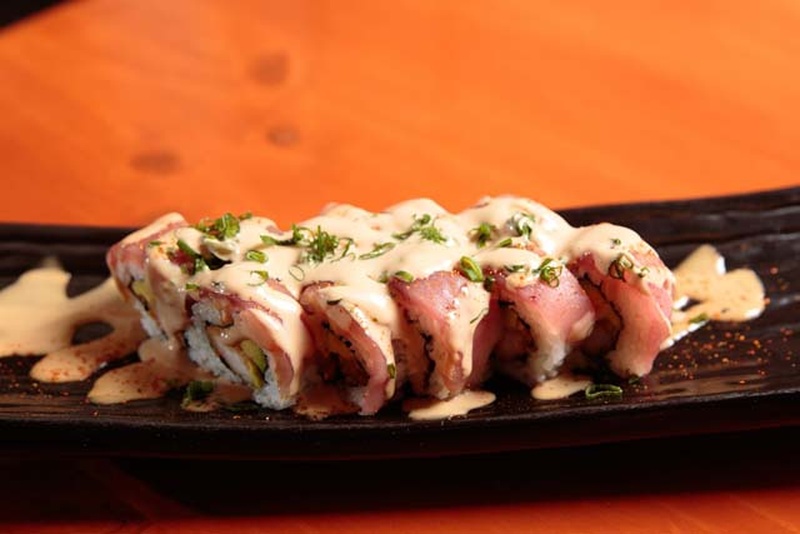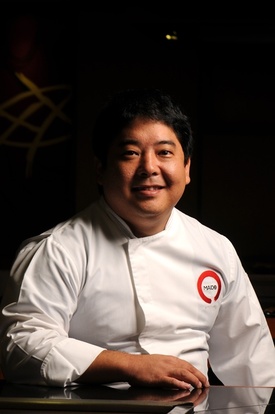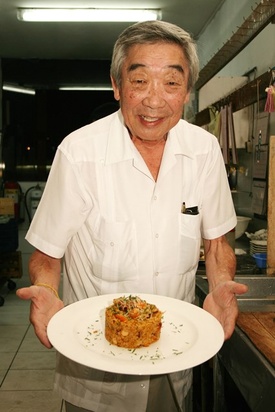In June 2015, Mitsuharu Tsumura's restaurant Maido was ranked among the 50 best in the world, according to a ranking by Restaurant magazine. It was a milestone for Nikkei cuisine. Tsumura then declared: “The most beautiful thing is that it is the first time in history that a Nikkei restaurant, with this style of cuisine, enters a list like this.” Maido ranked 44th.
Shortly before, in February, the chef highlighted at the Madrid Fusión 2015 gastronomic summit that Nikkei cuisine is the “result of the encounter and dialogue between two cultures”, Peruvian and Japanese. It is not Japanese food with Peruvian ingredients or Peruvian food with Japanese ingredients, but rather a cultural mix.
He used himself as an example: "I look Japanese, few people on the street would say because of my appearance that I am Peruvian, until that mischievousness of Peruvian cuisine, of spice and lemon, comes out."
The artist Eduardo Tokeshi often says something similar: “I am a bottle of sillao with Inca Kola inside” (a phrase that admits a variant by Tokeshi himself: sake instead of sillao). A definition that could be extended to the rest of Nikkei and the cuisine created by Japanese immigrants in Peru. Mitsuharu once declared to the newspaper El Comercio: “Defining what Nikkei cuisine is is like defining ourselves.”
A dish based on hedgehog that he presented at Madrid Fusión, with squid, tiger's milk and nori, among other elements, summarized that encounter: “An aesthetically very Japanese dish, that when you put it in your mouth is a Peruvian explosion.” .
NIKKEI GASTRONOMY IN THREE TIMES
In the book Nikkei is Peru , whose authorship he shares with the writer Josefina Barrón, Mitsuharu maintains that Nikkei cuisine has three stages.
The first, located in the 1950s, when Japanese immigrants prepared Peruvian food in inns or modest businesses. Restaurants like La Buena Muerte, by Minoru Kunigami, a capital name in the history of Peruvian-Japanese cuisine, open. “They didn't know they were pioneers of a new way of cooking. It was about surviving by doing the best they knew how to do. The Japanese flavor was seeping into the Creole seasoning.”
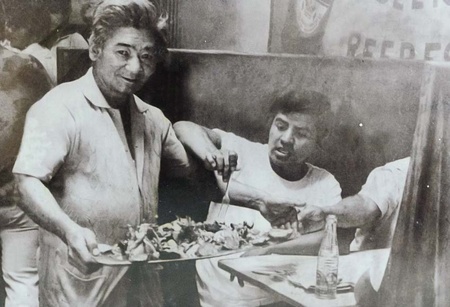
Kunigami was the author of successful creations such as the silverside tempura sandwich and the kamaboko tamale.
“Every empire needs a founder and that could be Minoru Kunigami (1918-2004), a chef who captivated a population accustomed to chicken and meat with his proposal of fish and seafood. Kunigami reeducated the Lima palate and popularized raw foods.”
The second, set in the 1970s, when Japanese chefs such as Nobuyuki Matsuhisa (Nobu) and Toshiro Konishi arrived in Peru. “Japanese companies come and need to have their own cuisine, as accustomed as they are to their diet, technique and flavors.” Traditional Japanese cuisine.
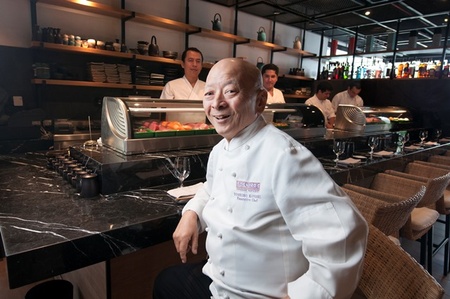
In the third stage, “both aspects come together. “Japanese and Creole with Japanese touches.” Nikkei sushi is born. “(The restaurant) Edo is one of the best representatives of this time. Edo brought the world of makis to more Lima residents, at a lower price and with very Creole flavors.”
The new generation of Nikkei chefs has as recognized representatives Mitsuharu, Hajime Kasuga, Rafael and Toshi Matsufuji, Diego Oka and Yaquir Sato, among others.
FROM THE FIRST JAPANESE WHO SET STEP IN LIMA
Nikkei gastronomy has another emblematic figure: Humberto Sato. For him, “Nikkei cuisine has always existed, since the first Japanese who set foot in Lima. There was no wasabi , (then the Japanese) grated kion or otherwise bought powdered mustard. It wasn't the same, but ultimately that was enough, it served as wasabi. It arose out of necessity. Shoyu did not come from Japan, they had to do it here, modifying and experimenting.”
Although the same ocean bathes both countries, the Japanese made better use of their resources. Sato remembered that when he was a child “in Barranco, in Agua Dulce, the octopus came out of the sea. Everyone ran, the Japanese picked them up. My father caught crabs at the Agua Dulce dock, in good quantities and big. Everyone took off, lest they fall and bite you. The octopus was not consumed, the crab even less so.”
The Japanese contributed to people in Lima valuing the products that the sea gave and ceviche was served fresh. “Before, ceviche was prepared at 8 in the morning, it was 3 in the afternoon and it continued to be sold. Not now, you order the ceviche and it is just made. “That’s the Japanese influence.”
Although in practice it already existed, Nikkei cuisine was only baptized as such in the 1980s by the poet Rodolfo Hinostroza, elated by a cheetah with pepper prepared by Sato that made him exclaim that he had discovered the Nikkei flavor. All he needed to do was shout “Eureka!”
WORLDWIDE RECOGNITION
Strictly speaking, Nikkei cuisine should refer to all cuisine made by Japanese descendants outside of Japan, not just Peruvian cuisine. However, its recognition is so great globally that it has become synonymous with Peruvian-Japanese cuisine, as the Spaniard Ferran Adrià has highlighted. A source of pride for Peruvian Nikkei, highlights Mitsuharu.
Already in 2011, the visionary Adrià, considered the best chef in the world, predicted that the Peruvian cuisine that “will work best abroad will be Nikkei.”
A couple of years ago, his brother Albert opened Pakta in Barcelona, a Nikkei cuisine restaurant that in 2014 obtained its first Michelin star, the highest distinction in the gastronomic world.
In a promotional video for Pakta, it is recalled that Japanese immigrants began to arrive in Peru in 1899 and that “the products and techniques of Japanese cuisine also travel with them, and they join the color and flavors of Peruvian cuisine.” .
Pakta means “union” in Quechua and offers two menus: Machu Picchu and Fujiyama. A declaration of intentions.
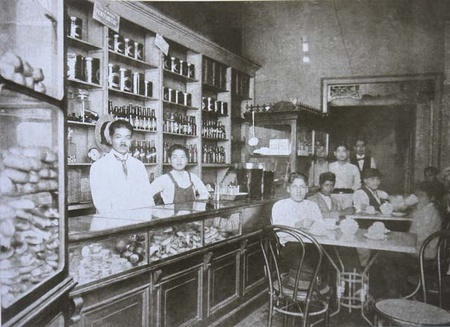
In Spain there is another representative of Nikkei cuisine, the Peruvian Luis Arévalo, owner and head chef of the Kena restaurant in Madrid, “where Peru meets Japan.”
“Talking about Kena is talking about Nikkei cuisine, or in other words, that fusion of Japanese and Peruvian cuisines resulting from the wave of Japanese immigrants who arrived in Peru at the end of the 19th century. “Kena represents the evolution of Nikkei cuisine, much more cosmopolitan and global, in which the product, treated with the most traditional Japanese techniques, becomes the absolute protagonist from a very personal point of view,” it says on its website.
Arévalo has brought Nikkei gastronomy to France, where he is gastronomic director of the K'ORI restaurant in the tourist center of Saint-Tropez. There they serve, for example, sushi and tiraditos.
Tsumura has also brought Nikkei cuisine to Milan, Italy. In July he participated in the program “Peru, feeds your soul” organized by Promperú, to present innovative dishes such as olive octopus with tofu and black quinoa.
Our kitchen has fewer and fewer boundaries. In China, the MGM Grand Macau hotel will open the AJI restaurant in 2016 (for “ají” in Spanish and “sabor” in Japanese), a project headed by Mitsuharu, who assures that for the first time in Asia people will enjoy “the magic, the flavors and the distinctive character of my Peruvian Nikkei cuisine.”
In South America, Peruvian-Japanese cuisine is present in countries such as Argentina, Chile, Brazil and Ecuador, through restaurants such as Osaka.
Mitsuharu Tsumura always remembers that Nikkei cuisine did not begin with makis, but with ceviches, and that pioneers like Kunigami prepared Creole cuisine with Japanese influence. Around 60 years later, the cuisine that was born from the necessity and creativity of Japanese immigrants continues to evolve and is beginning to conquer the world.
SUMILLA: Although in practice it already existed, Nikkei cuisine was only baptized as such in the 1980s by the poet Rodolfo Hinostroza, elated by a cheetah with pepper prepared by Sato that made him exclaim that he had discovered the Nikkei flavor.
* This article is published thanks to the agreement between the Peruvian Japanese Association (APJ) and the Discover Nikkei Project. Article originally published in Kaikan magazine No. 100, and adapted for Discover Nikkei.
© 2015 Texto y fotos: Asociación Peruano Japonesa



